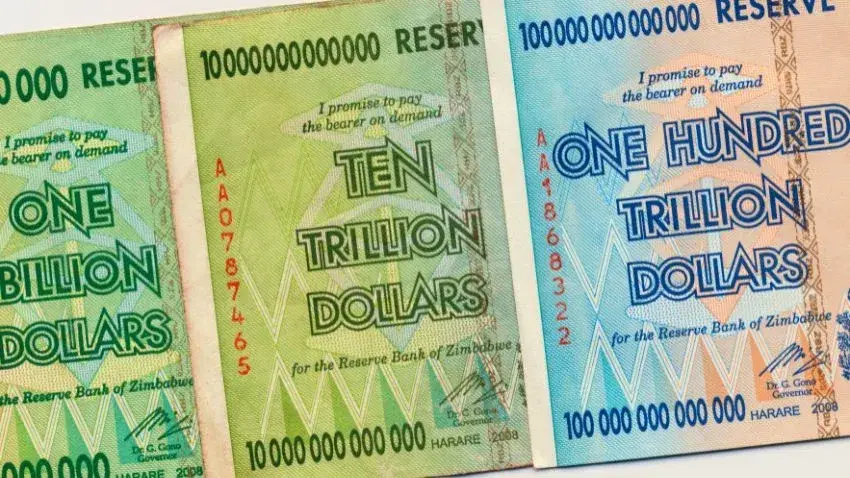Imagine having millions in your bank account yet struggling to afford basic necessities. This was the harsh reality for Zimbabweans in 2008, when hyperinflation turned everyday citizens into “millionaires”—but only on paper.
Zimbabwe’s economy collapsed under extreme hyperinflation, making even basic goods cost millions or billions of Zimbabwean dollars. By 2008, inflation skyrocketed to 89.7 sextillion percent, rendering the local currency practically worthless.
The Rise and Fall of Zimbabwe’s Currency
The crisis began in the early 2000s, fueled by political instability, economic mismanagement, and financial collapse. To keep up with rising prices, the government printed massive denominations, including the now-infamous 100 trillion Zimbabwean dollar note, which could barely buy a loaf of bread.
People had to carry bags of cash to buy groceries, while businesses stopped accepting the local currency, demanding foreign money instead. Banks imposed strict withdrawal limits, preventing citizens from accessing their own money. Some salaries became worthless overnight, and prices changed so rapidly that restaurants used chalkboards instead of menus, updating them multiple times a day.
The Collapse of the Zimbabwean Dollar
By 2009, Zimbabwe abandoned its dollar, switching to a multi-currency system where people used U.S. dollars, South African rand, and other foreign currencies. Overnight, trillionaire citizens had to start over.
Zimbabwe’s Economic Outlook in 2025
As of February 2025, Zimbabwe’s economy is on the path to recovery. The World Bank projects a 6% growth rate, up from 2% in 2024, driven by improvements in agriculture, mining, and services.
The country is also undergoing a major currency transition. In April 2024, Zimbabwe introduced the gold-backed Zimbabwe Gold (ZiG) currency to reduce dependence on the U.S. dollar and stabilize the economy. However, over 80% of transactions still occur in U.S. dollars, reflecting public skepticism about the new currency.
Despite this, the Reserve Bank of Zimbabwe (RBZ) plans to phase out the U.S. dollar by 2030, making ZiG the sole legal tender. The goal? Monetary sovereignty and long-term economic stability.
The Legacy of Zimbabwe’s Hyperinflation
Zimbabwe’s hyperinflation crisis remains one of the worst economic disasters in history, serving as a cautionary tale for nations worldwide. While recovery is underway, the road ahead remains uncertain as Zimbabwe navigates its new financial era.





















